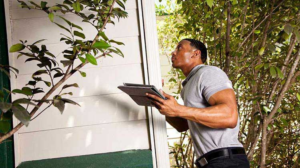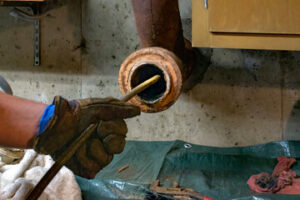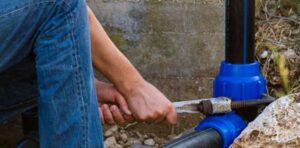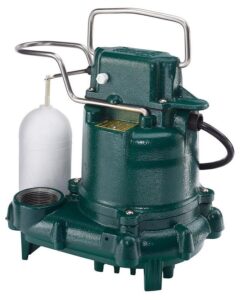Freedom Plumbing is the system of pipes and fixtures that distributes water, gas, and waste in homes and businesses. It is vital for sanitation and waste management, and it must adhere to strict regulations and building codes.

Regular maintenance by a qualified plumber can help prevent problems and save money in the long run. It can also protect your health by eliminating harmful bacteria.
Plumbing is a system that conveys fluids, typically water, in buildings and structures. It includes pipes and fixtures that provide a water supply and remove waste. It also includes the venting system that prevents the buildup of harmful gases inside a building. Plumbing is a vital part of every building structure and is essential for human survival. It ensures clean drinking water and manages waste in a safe and efficient way. Plumbing systems have evolved over time, and today’s modern systems are more efficient than ever before. They are designed to be durable and last for years, so you can rely on them for many years to come.
Plumbing is usually divided into two subsystems: the water supply system and the drainage system. The water supply system provides clean drinking water for the house’s occupants and supplies hot and cold water to appliances such as sinks, showers, toilets, and faucets. The drainage system carries wastewater and sewage away from the home, into sewers underground. The drainage system also handles stormwater runoff from the roof and gutters.
A plumbing system is comprised of a network of pipes that deliver water and waste to and from different locations within a structure. The pipes are generally made of copper, PVC, or PEX. The straight sections of the pipes are called pipes, while the curved ones are called tubes. These pipes are joined together using various methods, including brazing, soldering, and crimping. The joints in a plumbing system are sealed to prevent water leakage.
The plumbing industry encompasses a wide range of activities, from installing and repairing plumbing to designing and constructing entire systems. It is a highly skilled trade that requires training and experience to master. Plumbers must be able to read blueprints and understand how different parts of a system work together. They must also know how to handle tools and equipment such as wrenches, pliers, and pipe cutters.
The history of plumbing stretches back thousands of years, and it continues to evolve as people’s needs and technology change. While ancient plumbing systems were often prone to leaks and other problems, new advancements in materials and technology have made them more resilient and energy-efficient. Modern plumbing systems also feature innovative technologies that improve efficiency and conserve water, such as smart plumbing systems that monitor water usage and detect leaks.
Plumbing is a profession
Plumbing is a profession that involves the installation, repair, and maintenance of pipes and fixtures. It is a vital part of any building or structure, as it facilitates water supply and waste disposal. Plumbers are responsible for ensuring that these systems function properly and efficiently, which is important for the health and safety of the building’s occupants. Plumbing is a hands-on job that requires problem-solving skills and can be a great career choice for people who enjoy working with their hands.
The plumbing industry comprises a wide range of tasks, from repairing leaky faucets to installing whole-home filtration systems. It also encompasses the design and layout of plumbing networks. Many of the tools used in plumbing are designed for the specific purpose of addressing particular issues. Some examples of these include pipe wrenches, flaring pliers, pipe vises, pipe cutters, and soldering equipment. Other tools are more general, such as hammers and drills. Some plumbers even use video cameras to inspect sewer lines and other hidden areas of the plumbing system.
There are several benefits to becoming a plumber, including the opportunity to work on a variety of projects and the potential for a long-term career. However, there are some disadvantages as well, such as the need to adhere to strict safety protocols when working with hazardous materials and in confined spaces. In addition, plumbers often work evenings and weekends to respond to emergency calls. This can interfere with personal life and family obligations.
In general, plumbing involves laying out and connecting piping systems in residential, commercial, and industrial buildings. The plumbing industry is regulated by state and local governments to ensure safety and compliance with building codes. In some cases, plumbers may also need to obtain a permit or certification from the city or town in which they work.
A plumber’s typical workplace varies depending on the type of plumbing work they do. For example, plumbers who specialize in new construction install piping systems according to blueprints and building codes. They also connect these systems to appliances and fixtures such as sinks, toilets, and showers. Other plumbers focus on plumbing services for commercial and industrial applications, such as fire sprinklers and irrigation systems.
Plumbing is a safety hazard
Plumbing is a vital part of any building, providing clean water and removing waste. However, like all construction trades, it comes with its own set of safety hazards. These risks range from minor slips and falls to exposure to sewage-related diseases. Creating a safe working environment requires plumbers to understand these risks and take steps to minimize them.
A major safety hazard for plumbers is the use of chemicals such as drain cleaners, solvents and adhesives. These chemicals can be toxic if they come into contact with the skin or lungs, so it’s important to wear gloves and respirators when handling them. It’s also crucial to keep the work area clean and dry, and to dispose of flammable materials promptly.
Other common hazards for plumbers include injuries from falling objects and confined spaces. Plumbers often need to climb into crawl spaces, boiler rooms, pits and water tanks to perform their work. These spaces can be dangerous and require the use of ladders or scaffolding. Additionally, confined spaces can be oxygen deficient and may contain hydrogen sulfide, which can cause illness or even death.
Plumbers must also deal with rodents and contaminated water on a daily basis. These can spread diseases such as Campylobacter and E. Coli if they’re exposed to them. To avoid this, plumbers should wear protective gear and ensure that their workspace is properly ventilated.
Another risk associated with plumbing is electrical hazards. This can be caused by working in close proximity to electrical wiring or equipment. Plumbers should always turn off the power before starting work and use rubber-soled shoes and gloves when working near electricity. It’s also important to be aware of potential fire hazards and ensure that all electrical equipment is grounded.
While eliminating all on-site risks is impossible, there are many things that plumbers can do to reduce them. The most important step is to create a safety policy for their business that includes training for all employees. This will help them learn how to prevent accidents and injury and help protect the company from liability. Other important considerations are commercial vehicle insurance, general liability, and worker’s compensation.
Plumbing is a career choice
If you’re looking for a career change, plumbing might be the right choice for you. It’s a highly versatile trade that offers many different options, including service and new construction plumbing. You can also specialise in areas such as water systems, drainage or gas fitting. Regardless of what path you choose, it’s important to start your career with an apprenticeship and classes like the CPC40920 Certificate III in Plumbing Services (Plumber). This will give you the skills and qualifications needed for your future career as a plumber.
Unlike some careers, plumbing is not only physically demanding but also requires strong interpersonal and analytical thinking. In addition, it requires a great deal of manual dexterity. Plumbers are often called upon in emergency situations and must be able to follow technical plans and deal with difficult problems. As a result, they need to be highly motivated and driven. If you want a rewarding and interesting career, you should consider becoming a plumber.
One of the best things about plumbing is its variety. As a plumber, you’ll get to meet people from all walks of life and work on diverse projects. One day, you might be working on a toilet flush in a public building and the next, you’ll be fixing a backed-up pipe at a private residence. This diversity in work is ideal for people who need a change of scenery and like to meet new people.
Another benefit of plumbing is that it’s a recession-proof career. It’s a necessary service that most people need and can usually continue to provide even during times of economic hardship. In fact, some of the most successful plumbers are those who can find creative solutions to their clients’ problems and help them save money in the long run.
In addition, the pay for plumbers is good. While it’s not as high as some other professions, it can still be a solid career choice for those with the right set of skills. Moreover, you can get started with an apprentice program that will train you for the job and allow you to earn while you learn. This is a great option for those who don’t have the funds to attend college or university.



